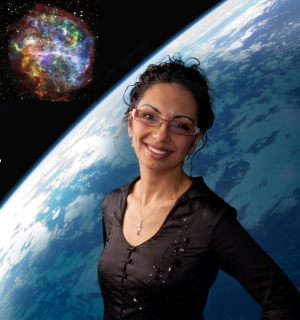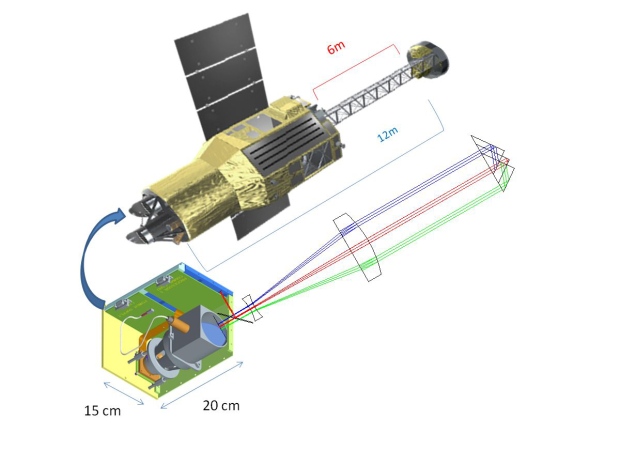
CBC: ASTRO-H X-ray telescope aims to solve black hole mysteries
A Japanese space telescope with X-ray vision sharpened by Canadian technology heads into orbit on Friday.
While other X-ray telescopes, such as NASA’s Chandra observatory, are already in orbit around the Earth, ASTRO-H has a couple of unique and valuable features.
For one thing, it has a detector that can distinguish the chemical fingerprints of elements in supernovae and their remnants, which take the form of coloured lines unique to each element.

The hard X-ray detectors are mounted on the end of an arm six metres long that will slide out of the telescope’s body. The Canadian-made CAMS system uses lasers and detectors to measure the amount and direction the boom moves, and correct the image to make it sharp again. (Canadian Space Agency)
With other telescopes, such lines were all blurred together. With ASTRO-H, the detector is sharp enough to let scientists distinguish each one, said Samar Safi-Harb, a professor and Canada research chair in supernova astrophysics at the University of Manitoba.
“It’s kind of like wearing glasses,” added Safi-Harb, another member of the Canadian science working group for ASTRO-H.
Research at the University of Manitoba is partially supported by funding from the Government of Canada Research Support Fund.






